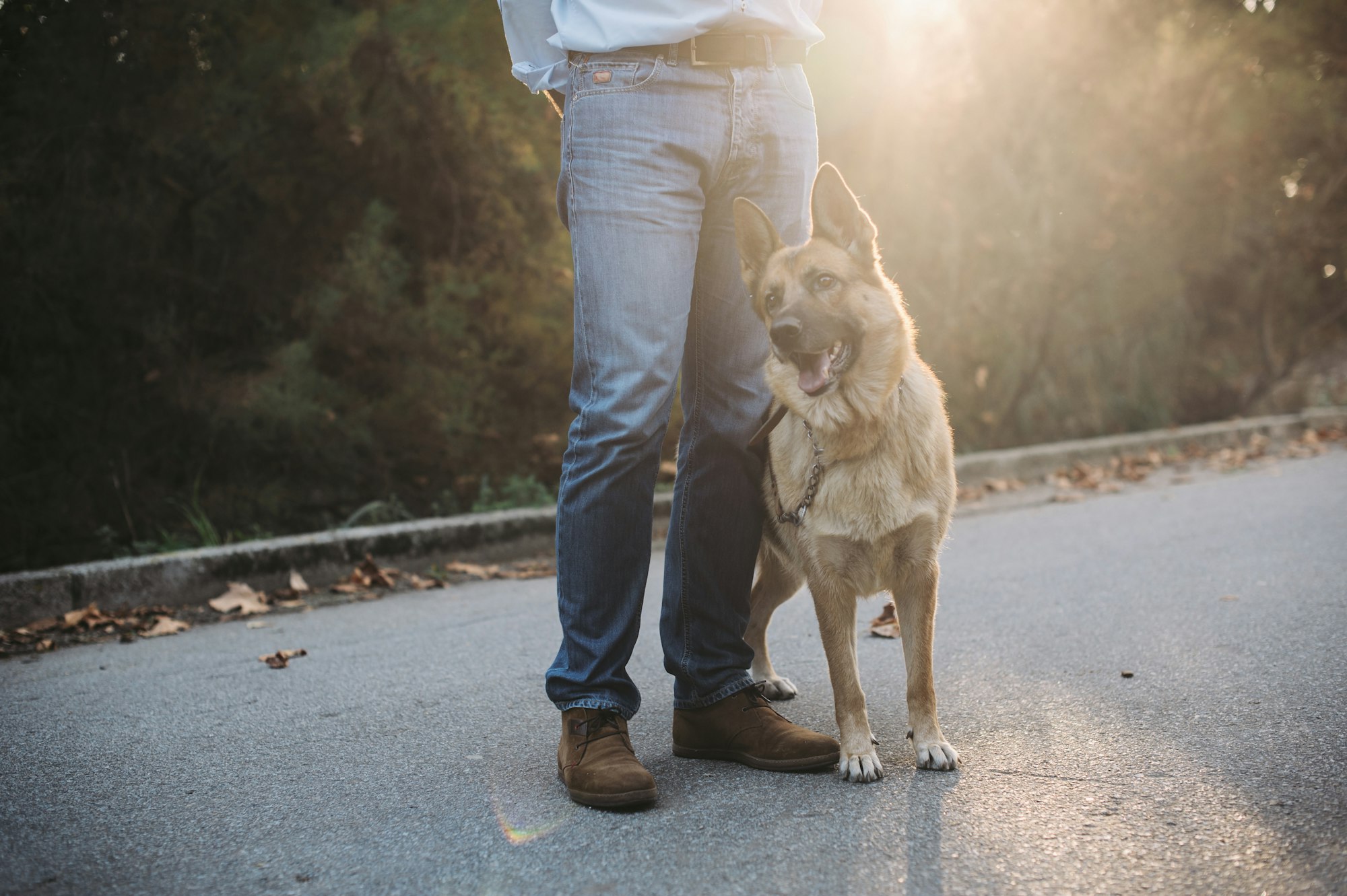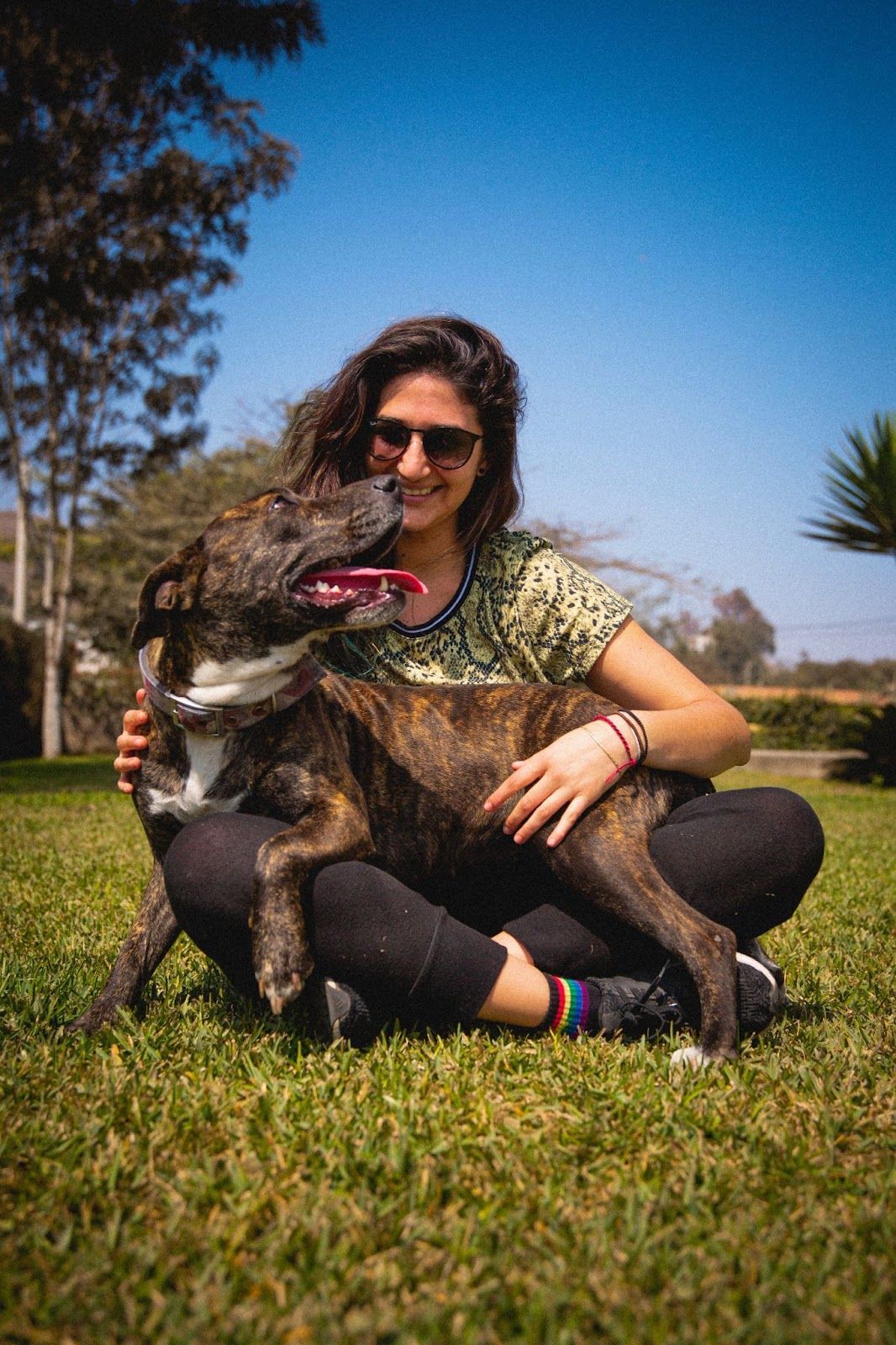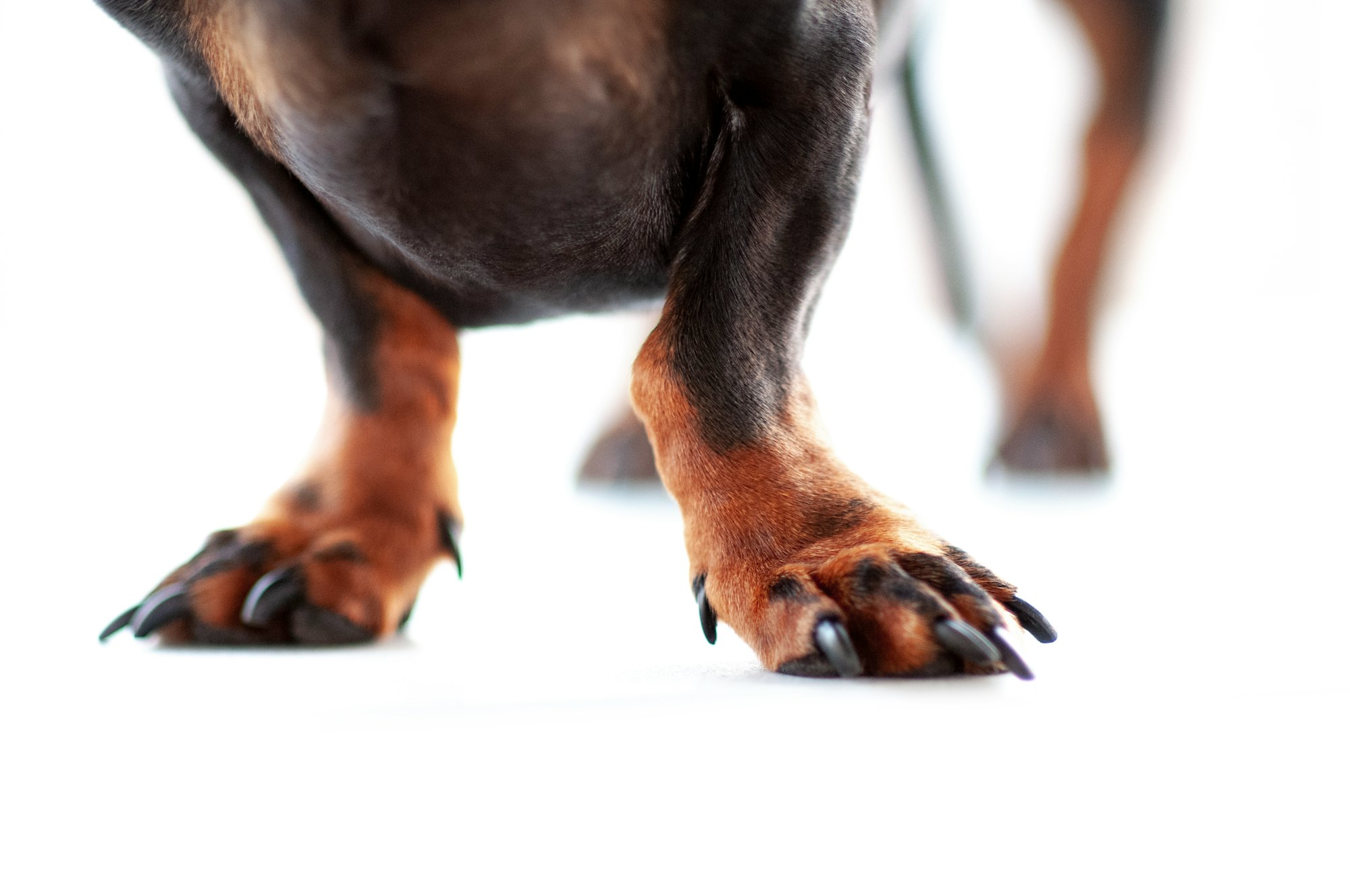Dogs are known for their playful and sometimes peculiar behavior. One funny action many dog owners may have seen is when their furry friend stands on them. This may seem odd, but there are various reasons!
Why does my dog stand on me?
To understand why your dog stands on you, let's explore their instinctual behavior, their desire for physical contact and attention, and how it could be a way for them to mark territory and assert dominance. Each sub-section provides insight into different possible explanations for this behavior.
The instinctual behaviour of dogs
Dogs, being instinctual creatures, show a variety of behaviors that are part of their genetic makeup. This understanding can help pet owners understand their furry friends' actions and give them a good home.
- Protective instincts - Dogs have a natural tendency to guard their pack or family. This can show in behaviors like standing on their owners. This is their way to show dominance and make sure their social group is safe and happy.
- Seeking comfort and security - Dogs may stand on their owners to feel secure, especially when feeling scared or anxious. Physical contact with their humans gives them solace and reassurance.
- Claiming ownership - Dogs may stand on their owners to mark their territory and show that they are the leader of the pack.
- Bonding and affection - Standing on their owners can also be a sign of love, loyalty, and closeness. Dogs form strong emotional bonds with their humans and use physical contact to strengthen these relationships.
Each dog is unique, and its behavior is affected by breed traits, personality, past experiences, and how it is trained. Therefore, while these reasons can explain why dogs stand on people, it is essential to observe your canine companion's behavior to understand its intentions.
Certain breeds are more likely to do this because of their genetics. For example, Chihuahuas and Yorkshire Terriers may stand on their owners as a way to show dominance. Knowing breed-specific behavior can help owners understand their furry friends better.
It is clear that dogs have complex instinctual behaviors in their interactions with humans. They communicate with us in nonverbal cues and gestures, making our bond with them even stronger.
Enhance Your Bond and Ensure Safety with the Fi Dog Collar
Understanding your dog's behavior, like standing on you, is crucial for fostering a deeper bond. Whether it's an expression of love, seeking comfort, or asserting dominance, having insights into these actions can help you connect better with your furry friend. One way to enhance this connection and ensure their safety is with the Fi Dog Collar. This smart collar not only provides GPS tracking to keep tabs on your dog's whereabouts, but it also allows you to monitor their activity levels and behavior patterns right from your phone. Equip your dog with the Fi Dog Collar today, and gain the peace of mind that comes from knowing your loyal companion is safe, secure, and thriving.
Seeking physical contact and attention
Dogs have unique personalities, so it's essential to look at individual differences. Breed, age, and past experiences can affect their need for physical contact.
To address this behavior, here are some tips:
- Provide alternatives for attention: Give your dog interactive toys or puzzles to divert their attention from standing on you.
- Use positive reinforcement: Reward your pup with praise or snacks when they show good behavior without standing on you.
- Create personal space: Set up a comfy space with blankets or beds for your dog to relax in, so they're less likely to stand on you.
- Training and obedience: Take your dog to classes to learn commands like "off" or "down," which can stop them from standing on you.
- Consult a professional: If your dog's standing behavior persists or worsens, talk to a vet or trainer for tailored guidance.
By understanding why your pup stands on you and using the right strategies, you can have a great relationship and meet their need for physical contact and attention.

Marking territory and asserting dominance
Dogs use peeing to tell others that an area is theirs and to show limits. Standing on you is how they flaunt their power and show control. Unneutered males are more likely to do this due to higher testosterone levels. They may also guard things they care about, like toys or food. It's important for owners to be the pack leader through constant training and clear messages.
Plus, they may stand on certain people they think are lower in status. This behavior can be based on breed, history, and personality. To address this, do the following:
- Train your pup with rewards to show you're the leader.
- Give your dog physical and mental activities to reduce boredom.
- Create a safe spot, like a crate, for them to go to calm down.
- Get them neutered/spayed to reduce hormone-related behaviors.
- Get professional help if the behavior continues.
These tips should help you and your pup have a great relationship based on trust and respect.
Understanding the body language of your dog
To better understand your dog's body language, dive into the sub-sections - signs of affection and seeking companionship, and signs of dominance and asserting control. These insights will shed light on why your dog might stand on you.
Signs of affection and seeking companionship
Dogs are known for their love and loyalty. To bond with them, it's important to understand their body language. Some common signs of affection include tail wagging, licking, and physical closeness. They may also bring their favorite toy or nuzzle against you.
Hachiko is a famous example of a dog's desire for companionship. Even after his owner's death, he waited at the train station every day. This story shows the immense love and loyalty our canine companions have.
By recognizing their signs of affection and companionship, we can create a loving environment for our furry friends.
Signs of dominance and asserting control
Dogs, territorial animals, show dominance and control to set their place in a social order. It's essential for dog owners to comprehend these behaviors to keep their bond with their pet healthy.
- Growling and Snarling: Dogs express dominance through growling and snarling. It's their way of communicating they're in charge and mustn't be defied.
- Eye Contact: Dogs use eye contact to prove dominance. By watching other dogs or their owners straight in the eyes, they show control and dominance.
- Standing and Puffing Up: Dogs may stand tall with an erect stance, appearing bigger. It is a signal of dominance and can intimidate others.
- Bumping or Pushing: Dogs might physically bump or push to display control. This behavior often appears when the dog wants attention or to demonstrate they are in control.
It's important to remember that each dog is unique. Some express these signs more than others. What's more, breed, training, and personality can influence how they show dominance.
To tackle such behaviors effectively, dog owners can do some things:
- Training helps to set clear boundaries and confirm the owner's position as leader. Keeping rules and rewarding desired behaviors reinforces this.
- Exercise and mental stimulation lessen dominance by giving dogs a chance to release energy. Playing or training with them redirects focus and gives them a sense of purpose.
Finally, guidance from trainers or specialists can help manage dominance-related issues. They can provide tailored strategies to address the challenge and ensure a good relationship between the dog and its owner.
By recognizing the signs of dominance and controlling dogs, owners can handle such behaviors and have a balanced connection. With consistent training, mental stimulation, and expert advice if needed, dogs and their owners can have a satisfying companionship.
The possible reasons behind your dog standing on you
To understand the possible reasons behind your dog standing on you, explore the various motivations behind their behavior. Love and affection towards you, seeking comfort and security, and attention-seeking behavior are the sub-sections we will delve into. Unravel the mysteries of your dog's actions and gain insight into their unique expressions of love and companionship.
Love and affection towards you
Are dogs standing on their owners? It's a sign of love! This is a way for them to express devotion and bond with their humans. Seeking physical closeness and attention, they may stand or sit on their owners.
- This behavior reveals that your pup sees you as a source of comfort and security.
- Maybe they are trying to mimic other pack members?
- Or maybe they are trying to establish dominance within the home?
- Some dogs may also stand on their owners to protect them.
- Perhaps they just want playtime or to grab your attention?
- It could also be a sign of anxiety.
Each pup is unique, so there may be extra factors involved in this behavior. In past times, humans and dogs had a close relationship. Standing on owners was seen as a way to show respect and devotion. This may have influenced today's canine behavior.

Seeking comfort and security
Dogs yearn for comfort and security. This behavior, seen as cute, is instinctive. They look to their owners for protection and safety - how they would with a pack.
When they stand on you, it is their way of seeking closeness and assurance. By being near, they feel safe and content. This is especially true when they are stressed or anxious. Your presence gives them the courage to confront these strong emotions.
Plus, standing on you is also a sign of your pup's love for you. It shows that they trust you and that you are important to them. Dogs love the emotional bond they share with their owners and by standing on you, they are strengthening this connection.
It's sweet, but don't overindulge them. If you always let them stand on you, they may become dependent or have separation anxiety when you are away. Therefore, it's important to find a balance between giving comfort and promoting independence.
Next time your pup stands on you, enjoy the moment, but also remember to motivate other ways of bonding. Play and do activities that fortify their self-reliance without weakening their need for love and safety. This way, you can cultivate a healthy and balanced relationship with your canine companion.
Treat yourself to a loyal friend who seeks comfort in your presence and supports their own growth. Foster this unique bond and make memories of love and joy for both of you.
Attention-seeking behavior
Do you find your pup standing atop you? This behavior, seen commonly in pooches seeking attention, could be due to a variety of factors. Here are some possibilities:
- Affection: Dogs love cuddling with their humans, and may stand on you to get closer.
- Attention: When your pup stands on you, they could be asking for your undivided focus.
- Dominance: Some dogs use this trick to show who's the boss.
- Anxiety: Standing on their owners can be a way for dogs to feel safe when scared.
- Excitement: Your pup may be enthused for upcoming activities or treats.
- Imitation: If you stand or have rewarded this action before, your dog may copy you.
Every dog is unique, and may have its own reasons to stand on you. To prevent this behavior, understand and meet your pup's needs.

How to manage your dog's behavior
To effectively manage your dog's behavior, tackle the issue head-on with proven solutions. Set boundaries and establish rules to guide your dog's behavior. Provide alternative designated spaces to redirect their energy. Additionally, redirect their attention towards positive reinforcement, encouraging desired behaviors. This section explores these techniques as solutions to manage your dog's behavior effectively.
Setting boundaries and establishing rules
Consistency is essential! Dogs do best with a routine, so set rules and stick to them.
Communicate clearly with simple commands and gestures to show what you expect.
Reward good behaviour with treats or praise to keep it up.
If your pet does something wrong, do not punish, but re-direct their attention to something appropriate.
Provide mental and physical stimulation - interactive toys and daily exercise.
If needed, seek professional help - a trainer or dog behaviourist can help with more complex issues.
To boost effectiveness of boundaries and rules, use the same tone of voice and stay calm during training.
Dogs pick up on repetition, so be patient and dedicated in creating a harmonious home.
Pro tip: All dogs are different - tailor your approach to their breed, age, and personality.
Providing alternative designated spaces
Check out the table below to see the different types of alternative designated spaces:
| Space | Function |
|---|---|
| Crates | Great for housetraining and creating a den-like atmosphere |
| Playpens | Provide a safe, controlled playtime spot |
| Exercise areas | Give your pup an outlet for energy |
| Quiet zones | Offer rest and relaxation |
Make sure the spaces you choose are right for your pup's size, breed, and temperament. Make them attractive and accessible with comfy bedding, toys, water bowls, and interactive games.
By having separate areas for different activities, you'll create structure and boundaries in your pup's routine. This helps manage their behavior and keeps them healthy and happy. Don't miss out on the perks of alternative designated spaces in your home. They can give your pup the outlets they need while keeping your home peaceful.
Redirecting attention and providing positive reinforcement
Interact with your pup to move their focus from bad habits to better ones! Offer treats and praise when they act in a desirable way. This teaches them what's ok and encourages them to repeat it.
Redirect them to more suitable activities when they do something bad. For example, if they start chewing on furniture, offer them a chew toy instead.
Be consistent when redirecting and rewarding good behavior. Everyone in the household should follow the same rules and reward good behavior the same way.
Make redirection and positive reinforcement part of your daily routine. This will help your dog learn good behaviors over time.
Every pup is unique, so always keep their individual needs and preferences in mind. This helps you tailor your approach to redirection and positive reinforcement effectively.
To create a harmonious relationship with your pup, consistently implement these techniques. Your consistent effort will produce great results in their conduct - don't miss out on this chance!
Conclusion
Why do our four-legged companions stand on us? To comprehend this, we need to explore their behavior and motivations. It is a display of affection and a way to get attention. Instinctively, they want to show dominance within their hierarchy.
Dogs stand on us to gain physical contact and assurance. Also, they can read human emotions and offer comfort. They may just crave our attention.
To address this, we need to set boundaries. We can redirect the desire for physical contact with petting or playing. Giving them items like beds or blankets can give them a sense of security.
Understanding why they stand on us is essential to nurture the bond. They may be claiming territory, but it is also a way to show affection and connect with us.

